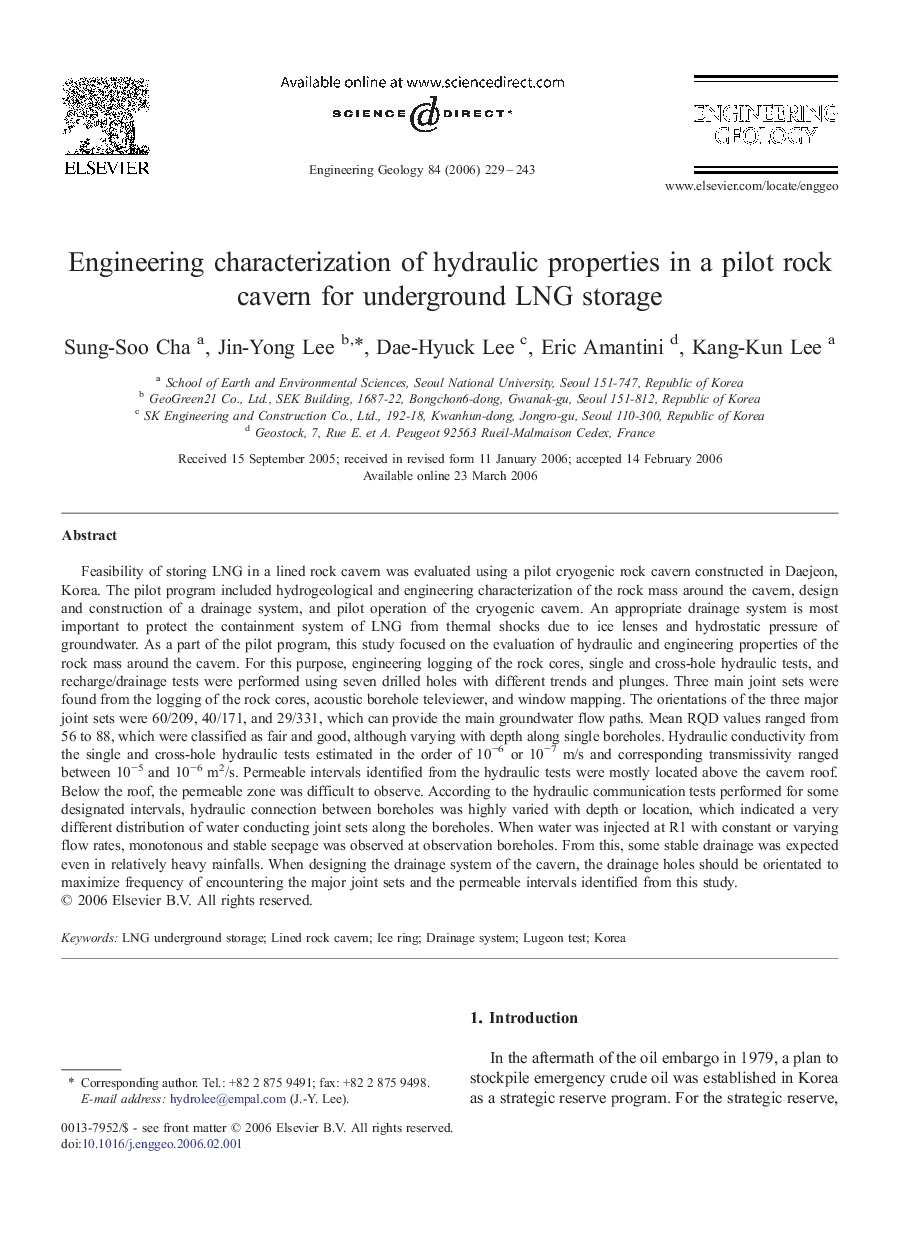| کد مقاله | کد نشریه | سال انتشار | مقاله انگلیسی | نسخه تمام متن |
|---|---|---|---|---|
| 4745172 | 1641920 | 2006 | 15 صفحه PDF | دانلود رایگان |

Feasibility of storing LNG in a lined rock cavern was evaluated using a pilot cryogenic rock cavern constructed in Daejeon, Korea. The pilot program included hydrogeological and engineering characterization of the rock mass around the cavern, design and construction of a drainage system, and pilot operation of the cryogenic cavern. An appropriate drainage system is most important to protect the containment system of LNG from thermal shocks due to ice lenses and hydrostatic pressure of groundwater. As a part of the pilot program, this study focused on the evaluation of hydraulic and engineering properties of the rock mass around the cavern. For this purpose, engineering logging of the rock cores, single and cross-hole hydraulic tests, and recharge/drainage tests were performed using seven drilled holes with different trends and plunges. Three main joint sets were found from the logging of the rock cores, acoustic borehole televiewer, and window mapping. The orientations of the three major joint sets were 60/209, 40/171, and 29/331, which can provide the main groundwater flow paths. Mean RQD values ranged from 56 to 88, which were classified as fair and good, although varying with depth along single boreholes. Hydraulic conductivity from the single and cross-hole hydraulic tests estimated in the order of 10−6 or 10−7 m/s and corresponding transmissivity ranged between 10−5 and 10−6 m2/s. Permeable intervals identified from the hydraulic tests were mostly located above the cavern roof. Below the roof, the permeable zone was difficult to observe. According to the hydraulic communication tests performed for some designated intervals, hydraulic connection between boreholes was highly varied with depth or location, which indicated a very different distribution of water conducting joint sets along the boreholes. When water was injected at R1 with constant or varying flow rates, monotonous and stable seepage was observed at observation boreholes. From this, some stable drainage was expected even in relatively heavy rainfalls. When designing the drainage system of the cavern, the drainage holes should be orientated to maximize frequency of encountering the major joint sets and the permeable intervals identified from this study.
Journal: Engineering Geology - Volume 84, Issues 3–4, 16 May 2006, Pages 229–243